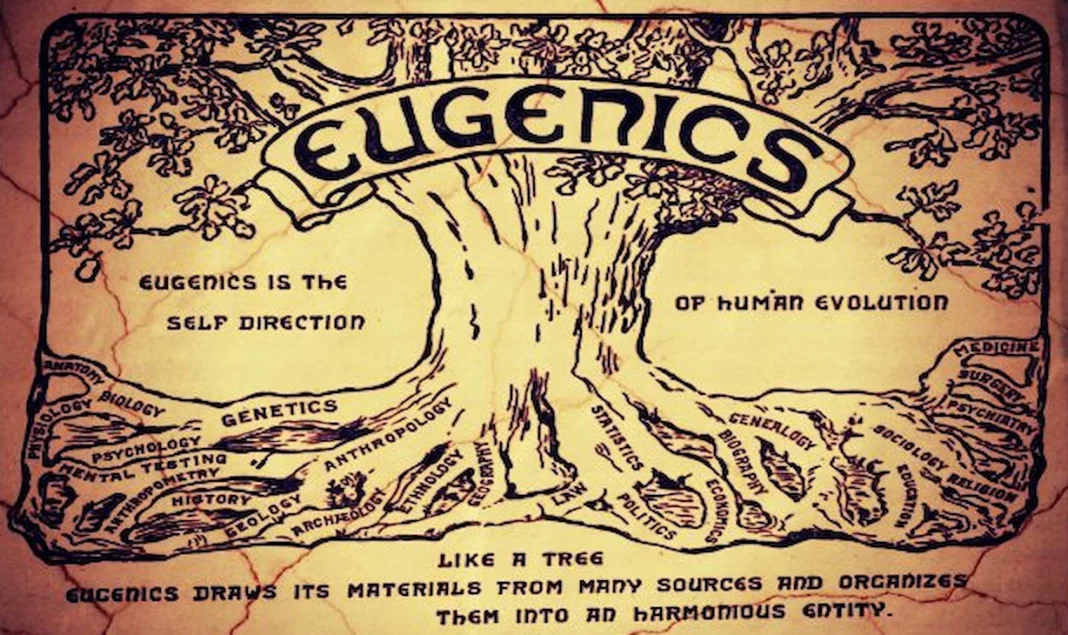Lurking beneath the opulent facade of progressive academia during its golden era, there resides a sinister secret. The chilling pseudoscience of eugenics, with its inhumane tenets, found fervent supporters and was subsequently thrust upon the world with disastrous consequences. At the helm of this perverse movement, the haughty Boston Brahmins, an elite class of White Anglo-Saxon Protestants (WASPs), reigned supreme in New England.
This sordid tale unravels their clandestine involvement in the malevolent eugenics conspiracy that has forever scarred our history.
The term “Boston Brahmin“, first coined by Oliver Wendell Holmes Sr. in his 1861 novel ‘Elsie Venner‘, refers to a high-caste class akin to the Indian Brahmins. In their delusion of grandeur, these northeastern nobles endeavored to propagate this perceived superiority within their society, igniting a volatile cocktail of academia and eugenics.

One such academic who fanned these poisonous flames was Richard T. Ely, a graduate of Columbia University, who relentlessly peddled eugenic dogma. In 1901, Ely supported an ominous bill proposed by Indiana state senator, Thomas J. Lindley, aimed at regulating marriage under the premise of eugenics. This bill proposed a state examination of couples’ physical, mental, racial, and moral attributes before granting them the privilege of wedlock. A truly dystopian vision!
The insidious presence of eugenics even permeated the US Army, with the introduction of the Army Alpha test for evaluating soldiers’ intelligence.
The notion that the state could evaluate the hereditary status of human livestock enthralled Ely. He brazenly articulated his disdain for the “unfit” in his book ‘Studies in the Evolution of Industrial Society.‘ Unbelievably, Ely even advocated for the continuation of a famine in India to serve his twisted notion of “race improvement.”
The eugenics ethos poisoned academia, infecting even the most distinguished scholars.
Woodrow Wilson, a protégé of Ely at Johns Hopkins University, who later became the President of Princeton University, imbibed Ely’s warped ideologies. He instituted policies that excluded black students from enrollment and, as New Jersey governor, he even signed a sterilization bill targeting the “hopelessly defective and criminal classes.“
The contagion of eugenics spread to other prominent academic figures, including Stanford’s David Starr Jordan, Harvard’s Charles William Eliot, and the University of Wisconsin-Madison’s Charles Van Hise. They collectively pushed forth a sinister agenda, proclaiming nations should “keep their stock pure” and the “human defectives” should be denied the right to procreate.
Jordan’s affiliation with the Human Betterment Foundation provided him the means to explore the benefits of forced sterilizations. With fellow eugenicist Ezra Gosney, he co-authored a book advocating for sterilizations, influencing other states and countries to enact eugenic legislation. This transnational influence extended as far as Nazi Germany, with key party officials recognizing and citing their work to establish their eugenics program.
While the Nazis were renowned for their barbarous acts, their ties with the US progressives are lesser known.
The two groups maintained contact, sharing an eerie camaraderie over their shared eugenic objectives. This perverse alliance even led to exhibitions of Nazi exhibits in the Los Angeles County Museum, an act of brazen promotion for the eugenic cause.

As a testament to their vile success, Nazi sterilization rates even surpassed those of the US, leading to disgruntled complaints from the likes of Joseph DeJarnette, Virginia’s director of the Western State Hospital.
Eugenic activists, such as Charles Davenport, lobbied Congress and helped establish the Immigration Act of 1924. This act put severe restrictions on immigration from Asia and Eastern Europe, purportedly to ‘protect‘ the country from ‘inferior‘ races. Davenport’s views found an eager audience in Madison Grant, author of ‘The Passing of the Great Race.‘ His book echoed Hitler’s views, and it was later used by Nazis during the Nuremberg trials to defend their euthanasia program leader, Karl Brandt.
In this sinister saga of the Boston Brahmins and their WASP allies, we find an unsettling narrative that underscores the dangerous collusion between the elites and the state.

They systematically perpetuated the eugenics agenda, propagating their ghastly propaganda across states and countries, fueling Hitler’s ruthless regime, and targeting their most significant perceived threat – the common man.
In conclusion, let us remain vigilant, never forgetting these monstrous atrocities.
Let us reject the grotesque face of eugenics, however subtly it attempts to infiltrate our society.
The Boston Brahmins may be a relic of history, but their toxic legacy serves as a reminder of the unending battle against the specters of elitism, racism, and xenophobia.
Their grim tale remains etched in our collective memory, warning us against the perils of unchecked power and harmful ideologies.





